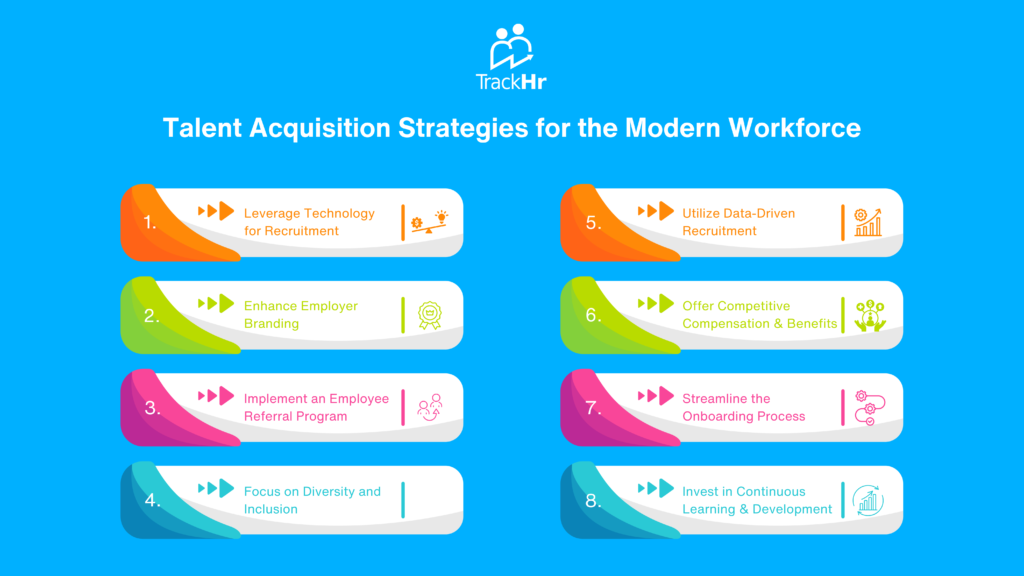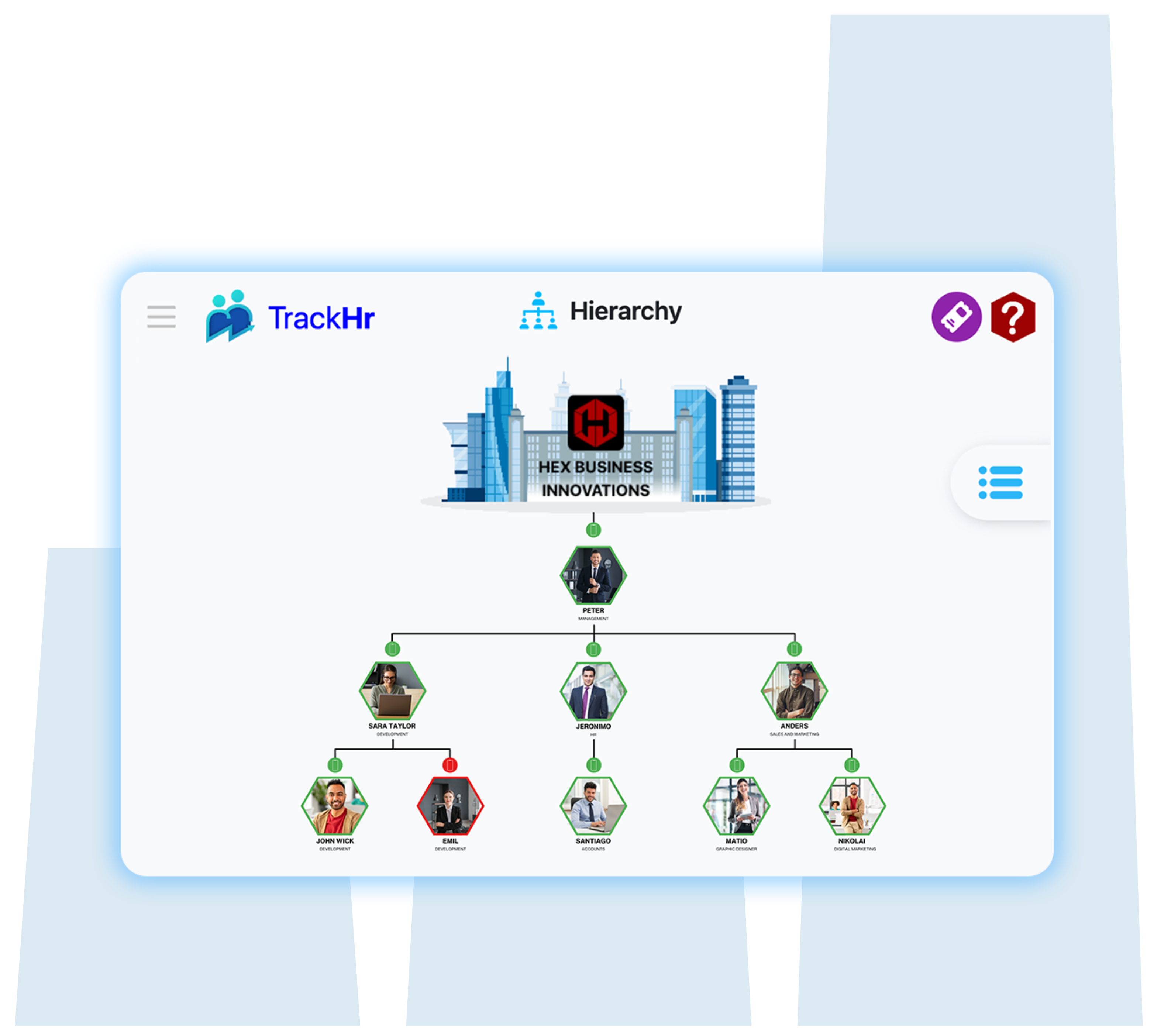Tuesday, 30 July 2024
Talent Acquisition Strategies for the Modern Workforce
In today’s competitive business landscape, effective talent acquisition is crucial for the success and growth of any organization. Companies need to adopt innovative strategies to attract, hire, and retain top talent. With the integration of advanced technologies like performance management apps and attendance management systems, businesses can streamline their talent acquisition process and enhance overall productivity. This blog will explore some key talent acquisition strategies that can help organizations build a strong and capable workforce.

1. Leverage Technology for Recruitment
Technology plays a pivotal role in modern talent acquisition. Utilizing advanced tools such as Applicant Tracking Systems (ATS) can simplify the recruitment process by automating job postings, resume screening, and interview scheduling. Additionally, integrating a performance management app can help organizations identify high-performing candidates and streamline their onboarding process. By leveraging these technologies, companies can save time and resources while ensuring they hire the best talent.
2. Enhance Employer Branding
A strong employer brand is essential for attracting top talent. Organizations should focus on creating a positive image by highlighting their company culture, values, and employee benefits. Utilizing social media platforms and professional networks like LinkedIn can help in promoting the company’s brand. Showcasing employee testimonials, success stories, and behind-the-scenes content can also provide potential candidates with a glimpse into the work environment, making the company more appealing.
3. Implement an Employee Referral Program
Employee referral programs are a cost-effective way to source high-quality candidates. Encouraging current employees to refer potential candidates can significantly reduce recruitment costs and time. To motivate employees to participate, companies can offer incentives such as referral bonuses or recognition awards. Additionally, referred candidates are more likely to be a good cultural fit and have a higher retention rate.
4. Focus on Diversity and Inclusion
Diversity and inclusion should be at the forefront of any talent acquisition strategy. A diverse workforce brings in varied perspectives, fosters innovation, and enhances problem-solving capabilities. Companies should ensure that their recruitment process is free from bias and actively seek to hire individuals from different backgrounds. Implementing diversity training programs and creating an inclusive work environment can help attract and retain a diverse talent pool.
5. Utilize Data-Driven Recruitment
Data-driven recruitment involves using analytics and metrics to make informed hiring decisions. By analyzing data from previous hiring processes, companies can identify trends and patterns that can improve future recruitment efforts. Metrics such as time-to-hire, cost-per-hire, and candidate source effectiveness can provide valuable insights. Integrating an attendance management system can also help in monitoring employee attendance and productivity, ensuring that the right candidates are hired for the right roles.
6. Offer Competitive Compensation and Benefits
Attracting top talent requires offering competitive compensation packages and benefits. Companies should conduct regular market research to ensure their salary offerings are in line with industry standards. In addition to monetary benefits, organizations can offer perks such as flexible work hours, remote work options, health and wellness programs, and professional development opportunities. A comprehensive benefits package can make a significant difference in attracting and retaining high-quality employees.
7. Streamline the Onboarding Process
A smooth and efficient onboarding process is crucial for new hires to feel welcomed and integrated into the company. Utilizing an online attendance system can simplify the onboarding process by allowing new employees to complete necessary paperwork and training modules digitally. Providing a structured onboarding program that includes mentorship and regular check-ins can help new hires acclimate quickly and become productive members of the team.
8. Invest in Continuous Learning and Development
Investing in the continuous learning and development of employees is vital for long-term success. Offering training programs, workshops, and certifications can help employees enhance their skills and stay updated with industry trends. A performance management app can be used to track employee progress and identify areas for improvement. By fostering a culture of continuous learning, companies can retain top talent and promote internal growth.
Conclusion
Effective talent acquisition strategies are essential for building a strong and capable workforce. By leveraging technology, enhancing employer branding, focusing on diversity and inclusion, and offering competitive compensation and benefits, companies can attract and retain top talent. Additionally, implementing data-driven recruitment practices, streamlining the onboarding process, and investing in continuous learning and development can further enhance the talent acquisition process. Embracing these strategies will enable organizations to stay ahead in the competitive business landscape and achieve sustainable growth.
Incorporating advanced tools like performance management apps, attendance management systems, and online attendance solutions can significantly enhance the efficiency and effectiveness of your talent acquisition strategies. Stay ahead of the curve by adopting these innovative approaches and building a robust talent pipeline for your organization.



